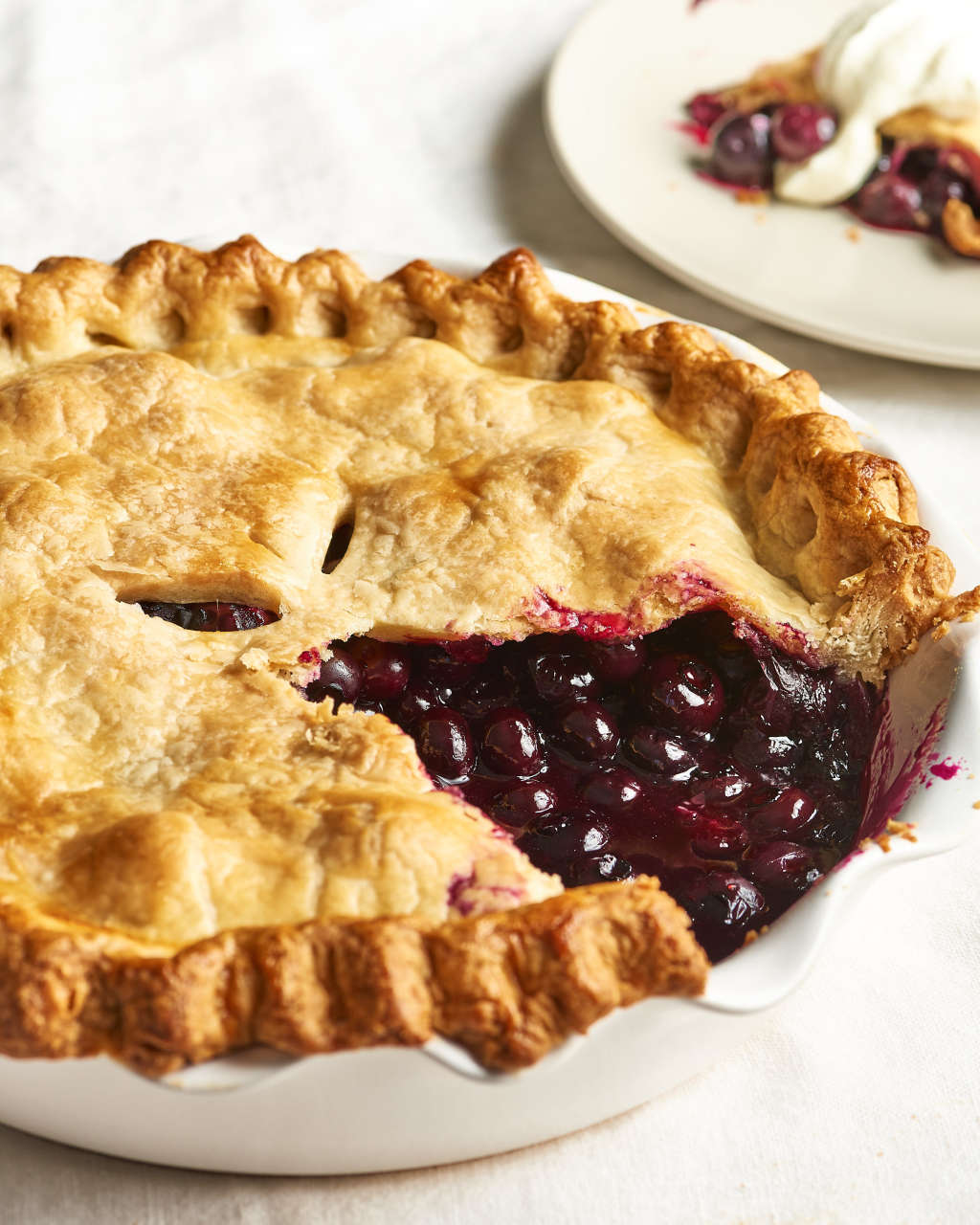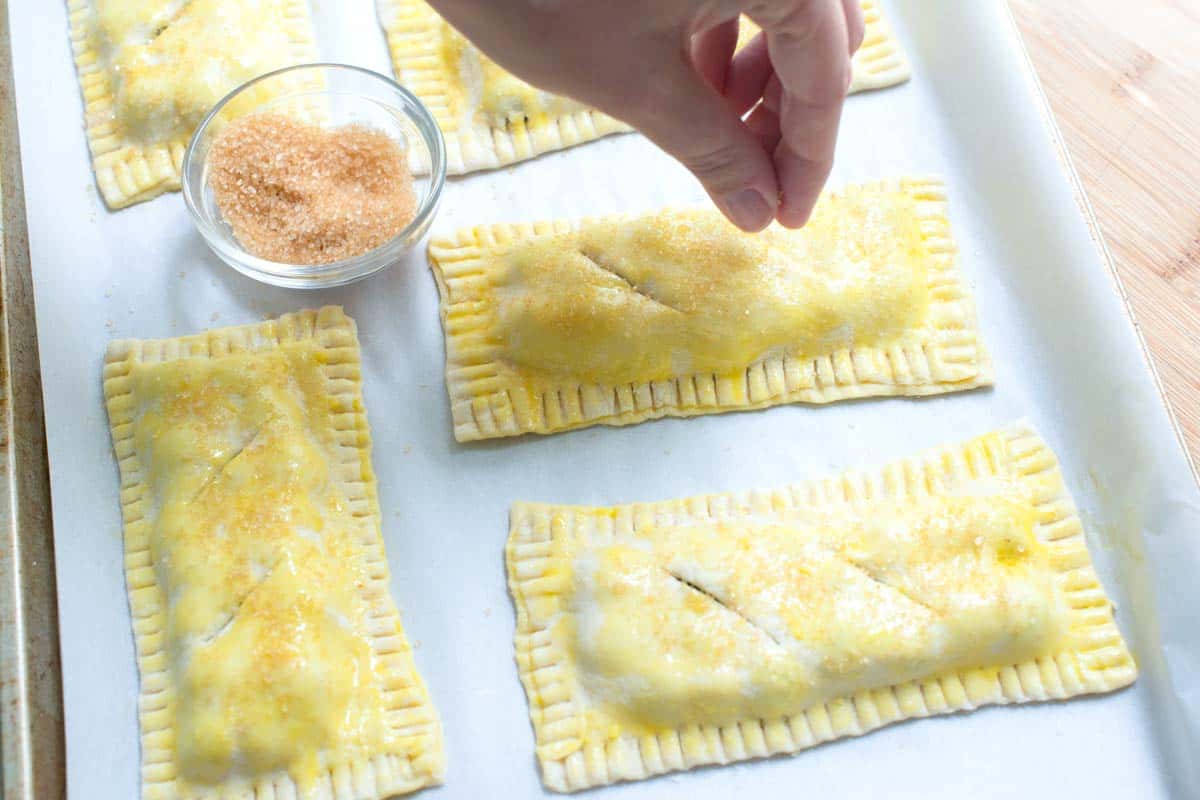Pie crust, the quintessential pastry that encapsulates mouthwatering fillings, can be a daunting task for aspiring bakers. However, the versatility of Bisquick, the ever-reliable baking mix, simplifies this process, making it accessible to both culinary novices and seasoned bakers alike. Embark on this delightful journey as we unveil the secrets of crafting a flaky, golden pie dough using Bisquick, transforming your culinary repertoire and elevating your pie-making skills to new heights.

Image: www.thekitchn.com
Bisquick: The Baking Wizard
Bisquick, a pre-mixed blend of flour, shortening, and leavening agents, has become an indispensable staple in home kitchens. Its ease of use, combined with its ability to create a variety of baked goods, from pancakes to biscuits and dumplings, has made it a beloved ingredient among bakers of all levels. Its versatility extends to the realm of pie crusts, offering a foolproof method for achieving a tender, flaky pastry that will complement any filling.
Unveiling the Magic Formula for Bisquick Pie Dough
The symphony of ingredients required for Bisquick pie dough is delightfully simple: Bisquick mix, cold water, and a dash of salt. The key, however, lies in the delicate balance of these elements. Too much water results in a dough that is sticky and difficult to handle, while too little water yields a crumbly and unyielding pastry. The addition of salt enhances the dough’s flavor and helps it retain its shape during baking.
Begin by measuring out 2 cups of Bisquick mix into a large mixing bowl. Gradually add 1/2 cup of cold water, stirring gently until the dough just comes together. Avoid overmixing, as this can result in a tough crust. Carefully shape the dough into a ball, wrap it in plastic, and refrigerate for at least 30 minutes. This resting period allows the gluten to relax, ensuring a more tender and flaky crust.
The Art of Rolling and Shaping the Dough
After the dough has chilled, it’s time to transform it into a delicate canvas for your fillings. Lightly flour a clean surface and place the dough in the center. Using a rolling pin, gently roll out the dough into a circle, approximately 12 inches in diameter. Be patient and avoid overworking the dough, as this can create a tough crust.
Carefully transfer the rolled-out dough to your pie plate. Trim the edges, leaving a 1-inch overhang. Fold the excess dough under itself, creating a double crust. Crimp the edges to seal the crust and prevent leakage during baking.

Image: deporecipe.co
Baking Perfection: Transforming Dough into Golden Delights
Preheating your oven to 425 degrees Fahrenheit is crucial for achieving a perfectly baked pie crust. Place the pie on a baking sheet to prevent any spills and bake for 15-20 minutes, or until the crust is lightly golden brown. For a more intricate touch, sprinkle raw sugar over the crust before baking to enhance its crispness and caramelized flavor.
Flavorful Variations to Elevate Your Crust
The beauty of Bisquick pie dough lies in its versatility, providing a blank canvas for culinary experimentation. For a touch of savory indulgence, add grated Parmesan cheese or dried herbs to the dough, creating a crust that complements savory fillings. Embracing the richness of the sea, incorporate finely chopped shrimp or crab meat to delight seafood enthusiasts.
Expert Insights and Tips for Flawless Pie Crusts
-
Use ice-cold water when mixing the dough. This helps keep the fat in the Bisquick from melting, which contributes to a flakier crust.
-
Avoid overworking the dough. Overworking will result in a tough crust.
-
If the dough is too sticky, add flour one tablespoon at a time until it becomes manageable.
-
If the dough is too dry, add water one teaspoon at a time until it just comes together.
-
Refrigerate the dough for at least 30 minutes before rolling it out. This helps the gluten relax, which results in a tender crust.
-
Roll out the dough on a lightly floured surface to prevent sticking.
-
Crimp the edges of the pie crust to seal it and prevent leakage during baking.
-
Preheat the oven to 425 degrees Fahrenheit to ensure an evenly baked crust.
-
Bake the pie for 15-20 minutes, or until the crust is lightly golden brown.
How To Make Pie Dough With Bisquick
Conclusion: Baking Triumphs, Pie by Pie
With patience, practice, and the unparalleled convenience of Bisquick, crafting perfect pie dough becomes a culinary adventure that will transform your home-baked creations. Experiment with various fillings and crust enhancements, enchanting your taste buds with a symphony of flavors. Embrace the art of pie-making, let your culinary prowess flourish, and share the joy of homemade pies with loved ones, creating memories that will warm hearts and satisfy appetites.







